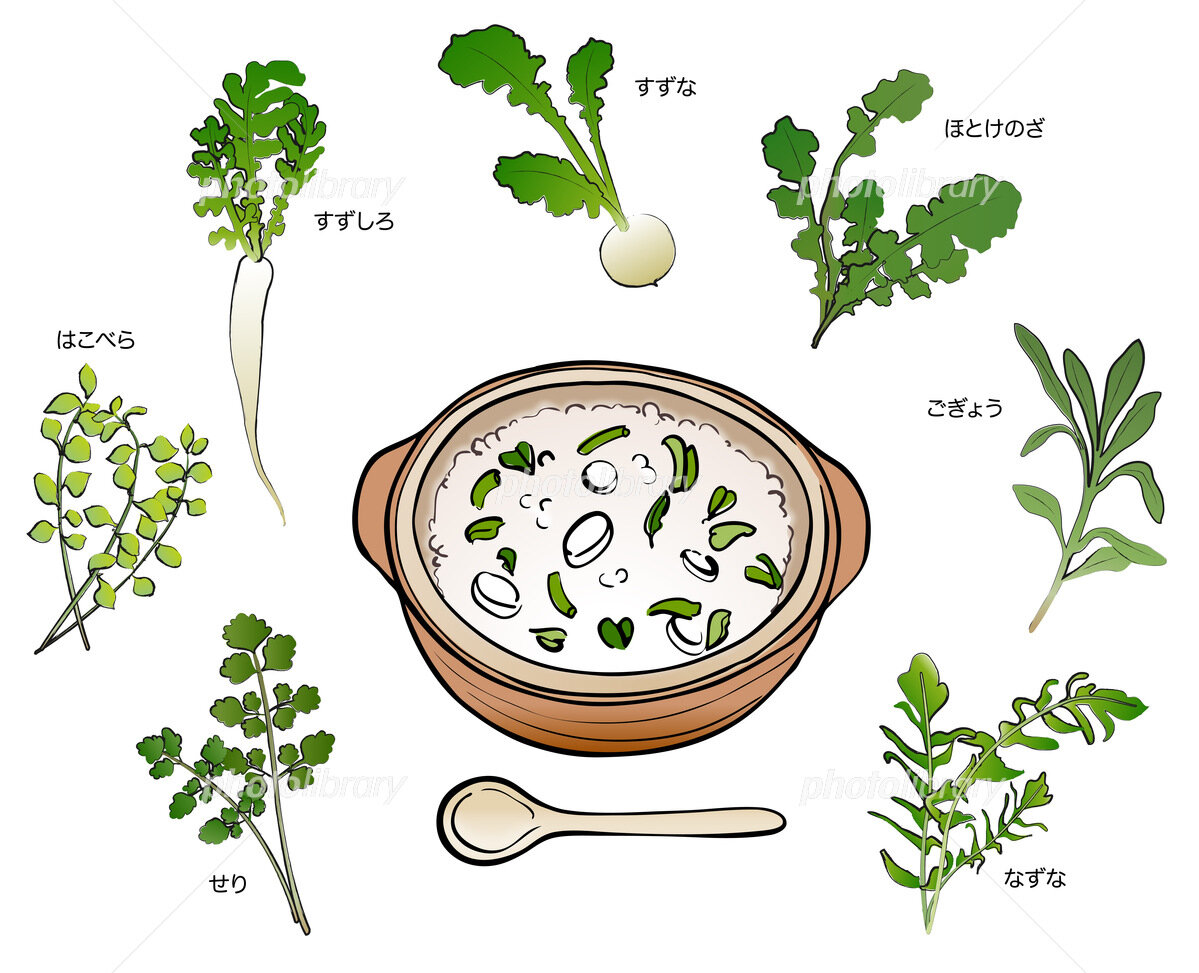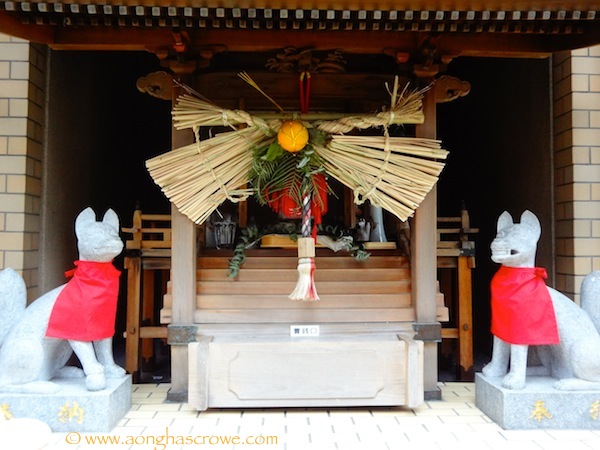This is a piece I wrote for GaijinPot last year.
My wife took down the shime kazari the other day.
Shime kazari are the decorations you find hanging on front doors and gates at o-Shōgatsu (お正月, or the Japanese New Year). Traditionally made with twisted rice straw, they are often festooned with a daidai (bitter orange), fern fronds and gohei or shide (zigzag strips of white paper), the ornaments serve to welcome Toshigami-sama, the Shintō deity who brings a bountiful harvest and blessings for the new year.
Modern designs, like ours (above and below), take great liberties with more traditional decorations, adding generous loops of red-and-white cords of twisted paper, known as mizuhiki, pine branches, colorful Japanese washi paper, auspicious doodads and occasionally fresh flowers.
I asked my wife what she was doing.
“Shōgatsu is over… ”
“Says who?”
“My parents already took down their shime kazari.”
“So? I paid ¥4,000 for that. Put it back. Please!”
“But… ”
There’s quite a bit of debate about when you should take your New Year’s decorations down. Regional variations have something to do with it — why, even the design of the shime kazari themselves can vary greatly from region to region — but so do different interpretations of when o-Shōgatsu is officially concluded.
I guess you could say a similar discussion exists in the West concerning when Christmas trees should be tossed out. Is it the Feast of the Epiphany, which falls on Jan. 6 (hence the 12 Days of Christmas)? Or should the tree and other holiday decorations remain until Candlemas, which falls on Feb. 2, i.e. 40 days after the nativity of Jesus? Thanks to Christmas tree recycling drives hosted by the Boy Scouts in early January, in America at least, trees are now being ground up into mulch before they can become a fire hazard.
As for the last day of o-Shōgatsu, many assert that it is Jan. 7. This day is widely considered to be the final day of matsunouchi, the week-long period starting with New Year’s Day during which the kadomatsu (New Year’s “gate” pine) and other decorations are displayed. New Year’s greeting cards, known as nengajō, should be received within the first week of the year. The seventh is also the day Japanese eat nanakusa gayu, a dishearteningly bland rice porridge dish made with seven different herbs. It was for these reasons, I suspect, that my wife’s mother and many others had already taken their own decorations down.
But, I still wasn’t sold on the idea.
During a quick walk around my neighborhood, I noticed several shops were still displaying their shime kazari. Perhaps because it was Seijin-no-hi, or Coming-of-Age Day, a national holiday that serves as a psychological bookend to New Year’s.
Whatever the shops’ motivations, some believe that it’s quite alright to keep the decorations up until Jan. 15, a date known as Ko-Shōgatsu (小正月, Little New Year), as was the custom up until the Edo Period (1603-1868). The first week of the new year was called Ō-Shōgatsu (大正月, lit. “Big New Year,” in this instance) while the rest of the month was considered just regular “Shōgatsu.”
Rice porridge with seven herbs and salt.
Ko-Shōgatsu is known by other names, too, such as Niban Shōgatsu (Second New Year’s), Onna Shōgatsu (女正月, Woman’s New Year) and so on. Before Japan adopted the Gregorian solar calendar, the 15th was the day on which the full moon appeared. As far back as the Heian period (794-1185), it was customary to eat rice porridge made with sweet, red azuki beans. A similar dish called o-shiruko (sweet red-bean soup), made with azuki beans and half-melted globs of mochi (sticky rice cake) is traditionally eaten around the 11th, the day kagami (mirror-shaped) mochi decorations are broken. Today, at shrines throughout Japan, you can find hi-matsuri (火祭り, fire festivals), known as sagicho or dondoyaki (burning of New Year’s gate and other decorations), held on the 15th when kadomatsu, shime kazari and the previous year’s talismans are set alight in a bonfire.
Despite that, others argue that it’s acceptable for New Year’s decorations to remain until Hatsuka (20th day of the month) Shōgatsu, which falls, not surprisingly, on the 20th of January. In the Kansai area, the head and bones of the buri (Japanese amberjack) are cooked with sake kasu (lees), vegetables and soy beans. Because of this, the day is also called Honé (bone) Shōgatsu.
My wife, following her mother’s example, had been deferring to tradition. I countered with the argument that if we were really going to stick to good ol’ “tradition,” we would have to keep the shime kazari up until March 2, which — in accordance with the Chinese lunar calendar — is actually Jan. 15.
“Let’s keep it up until Hatsuka Shōgatsu, then,” my wife suggested.
“The 15th will be fine,” I said. “We don’t want to get carried away.”








